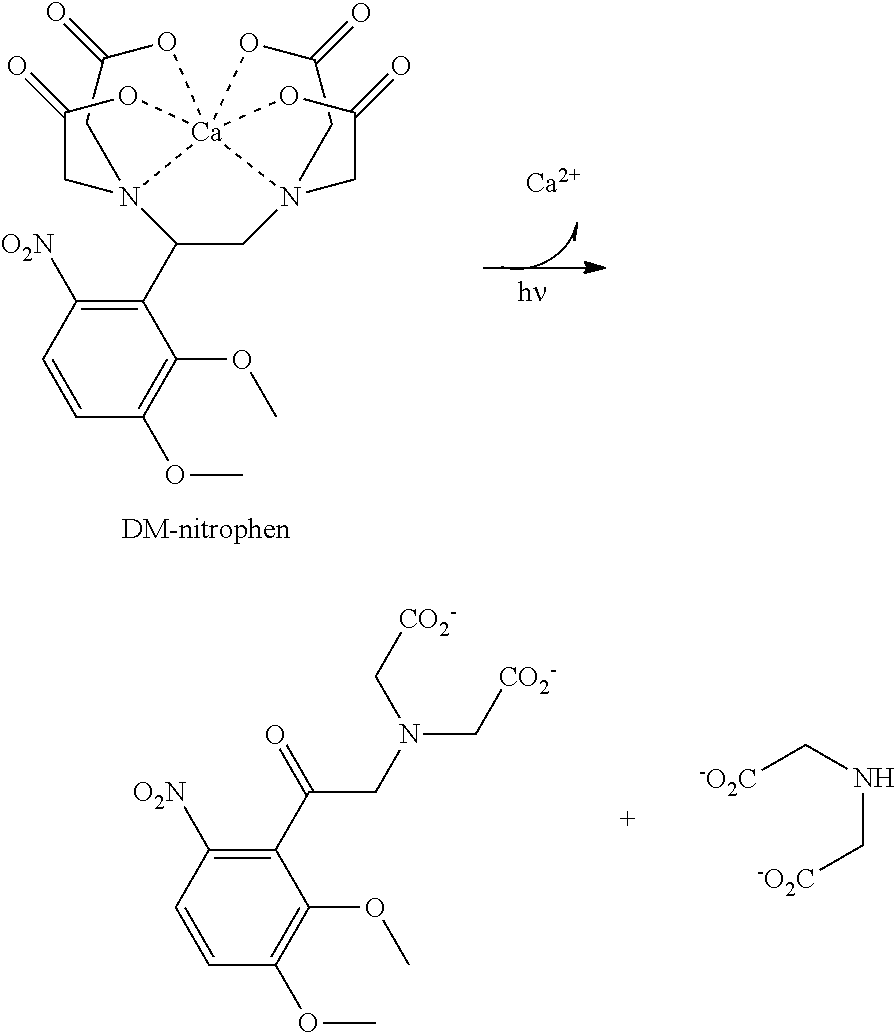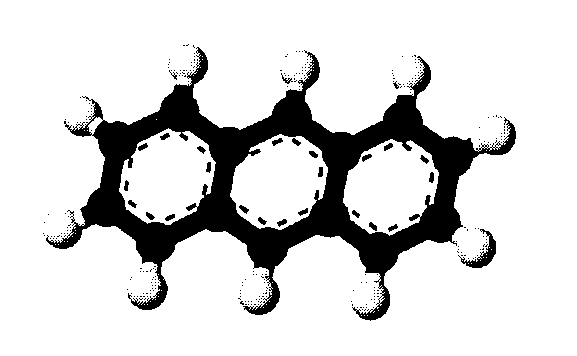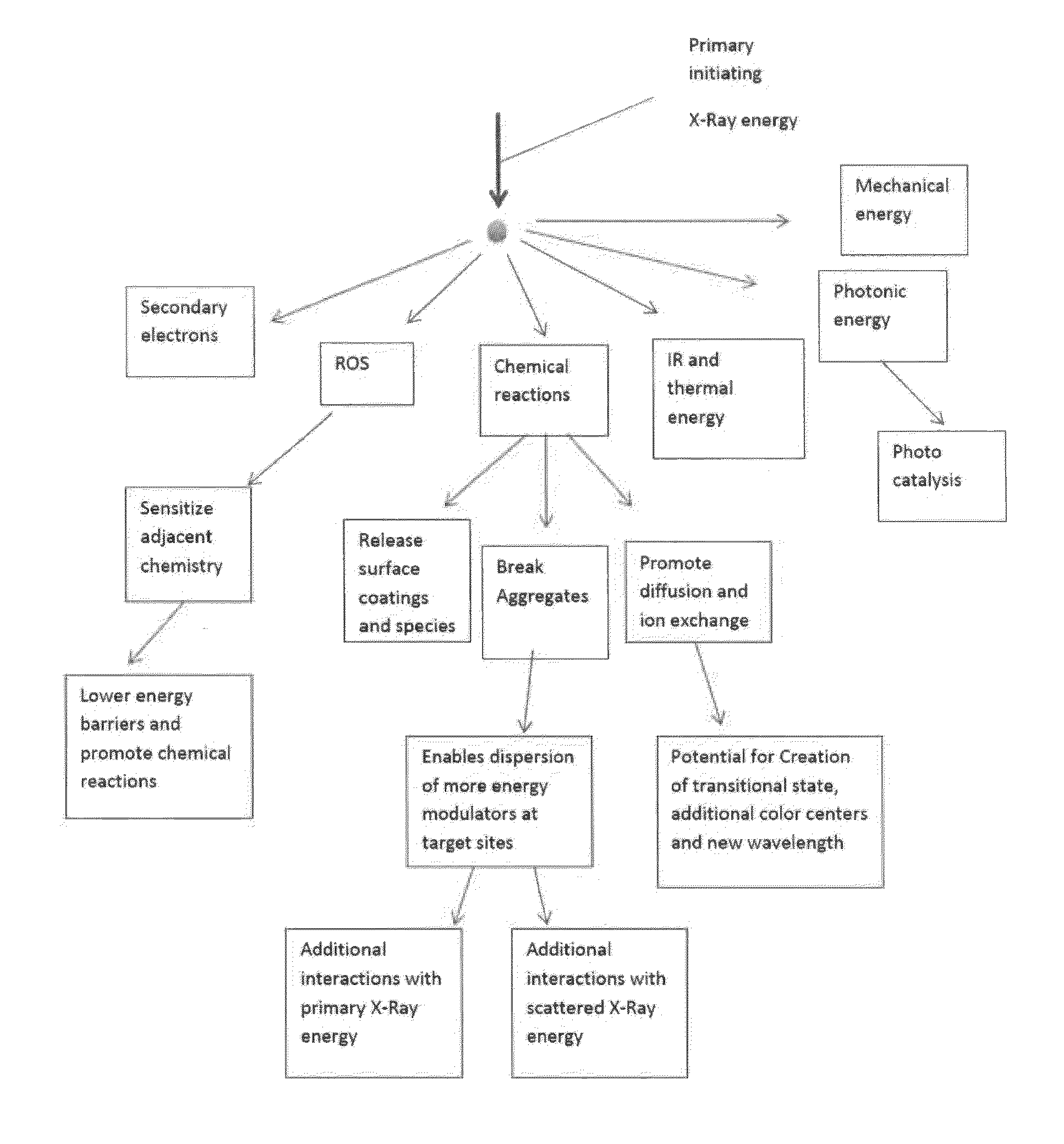Interior energy-activation of photo-reactive species inside a medium or body
a technology of interior energy activation and photo-reactive species, which is applied in the direction of energy-based wastewater treatment, chemical vapor deposition coating, packaging goods, etc., can solve the problems of unsuitable overheating of the medium to be sterilized, unattractive use of solvent-based products in adhesive and surface coating applications, and conventional sterilization
- Summary
- Abstract
- Description
- Claims
- Application Information
AI Technical Summary
Benefits of technology
Problems solved by technology
Method used
Image
Examples
working examples
[0303]To demonstrate the present invention, an adhesive chemistry was made adding 75% by weight of PUMA 92-056 (from Rahn Corp) to 20% of TriMethyl-Trimethylolpropane-Trimethacrylate (TMPTMA) from BASF and a 5% by weight of photo-initiator Darocur 1173 from BASF. The chemistry was mixed with various phosphors (described below) ranging from 6% by weight to 20% by weight. The mixture was then stirred thoroughly and stored in a light-tight container.
[0304]There were three sets of phosphors evaluated. The first set of phosphors included a 50%-50% mixture of the Flamingo-phosphor and the Green-Phosphor. The second set of phosphors consisted of a 50%-50% mixture of the Red-phosphor and the Yellow-Phosphor. The third set of phosphors consisted of a 25% of the Red-phosphor, 25% of the Yello-phosphor, 25% of the Flamingo-phosphor, 25% of the Green-phosphor.
[0305]Furthermore, a fourth set of phosphors included a mixture of 50% of LaOBr and 50% of YTaO4. The fourth set of phosphors were phosph...
PUM
| Property | Measurement | Unit |
|---|---|---|
| Color | aaaaa | aaaaa |
| Density | aaaaa | aaaaa |
| Volume | aaaaa | aaaaa |
Abstract
Description
Claims
Application Information
 Login to View More
Login to View More - R&D
- Intellectual Property
- Life Sciences
- Materials
- Tech Scout
- Unparalleled Data Quality
- Higher Quality Content
- 60% Fewer Hallucinations
Browse by: Latest US Patents, China's latest patents, Technical Efficacy Thesaurus, Application Domain, Technology Topic, Popular Technical Reports.
© 2025 PatSnap. All rights reserved.Legal|Privacy policy|Modern Slavery Act Transparency Statement|Sitemap|About US| Contact US: help@patsnap.com



